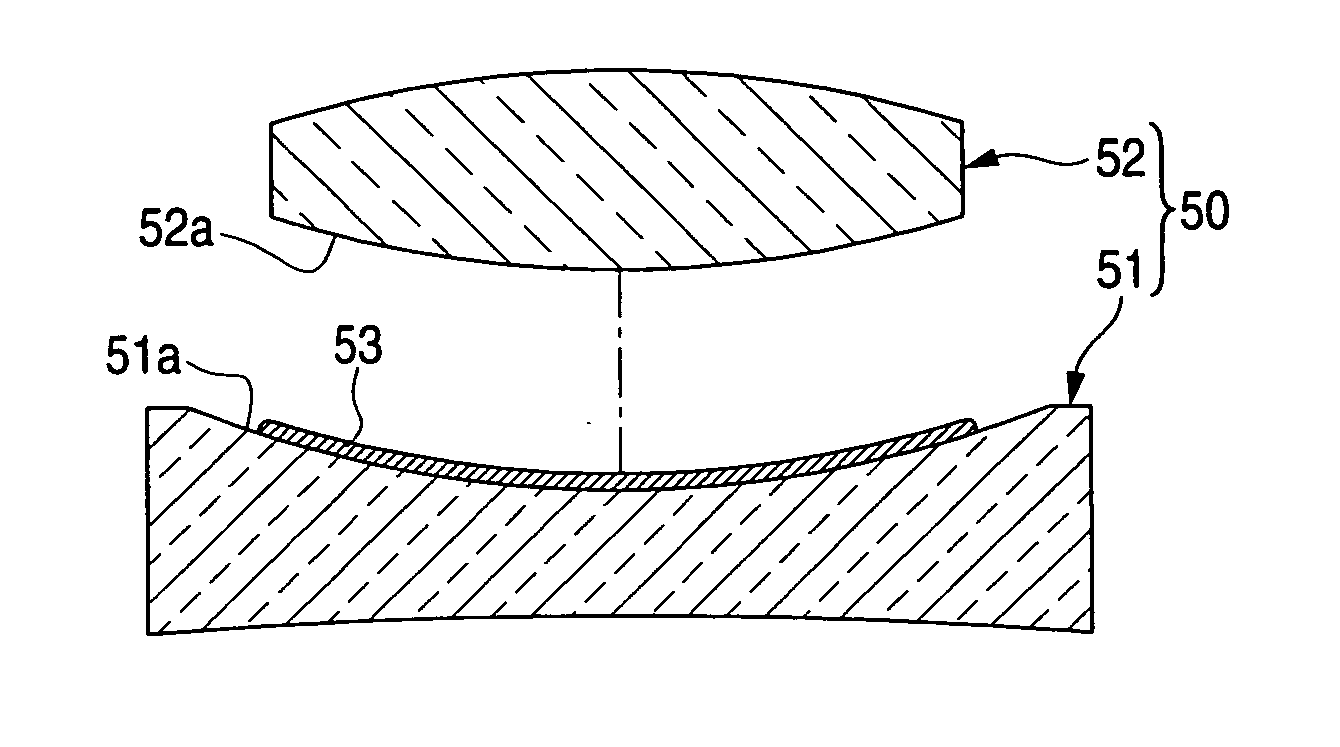Method for manufacturing cemented lens, cemented lens and projector apparatus
- Summary
- Abstract
- Description
- Claims
- Application Information
AI Technical Summary
Benefits of technology
Problems solved by technology
Method used
Image
Examples
Embodiment Construction
[0027] A cemented lens 10 shown in FIGS. 1A and 1B includes two lenses, i.e. a first lens 11 having a concave surface 11a and a second lens 12 having a convex surface 12a. For example, the first lens 11 is a concave lens having a negative refracting power, and the second lens 12 is a convex lens having a positive refracting power. The concave surface 11a of the first lens 11 and the convex surface 12a of the second lens 12 have one and the same curvature. The first lens 11 and the second lens 12 are cemented through the concave surface 11a and the convex surface 12a as cementing surfaces. As shown in FIGS. 2A and 2B, the first lens 11 and the second lens 12 are bonded by adhesive 13 in a circumferential end portion located out of their effective area 10a.
[0028] The effective area 10a is a chief area which will serve as a chief optical path including an optical axis A of the cemented lens 10, and which includes the centers of the lens surfaces of the lenses 11 and 12 including the c...
PUM
 Login to View More
Login to View More Abstract
Description
Claims
Application Information
 Login to View More
Login to View More - R&D
- Intellectual Property
- Life Sciences
- Materials
- Tech Scout
- Unparalleled Data Quality
- Higher Quality Content
- 60% Fewer Hallucinations
Browse by: Latest US Patents, China's latest patents, Technical Efficacy Thesaurus, Application Domain, Technology Topic, Popular Technical Reports.
© 2025 PatSnap. All rights reserved.Legal|Privacy policy|Modern Slavery Act Transparency Statement|Sitemap|About US| Contact US: help@patsnap.com



